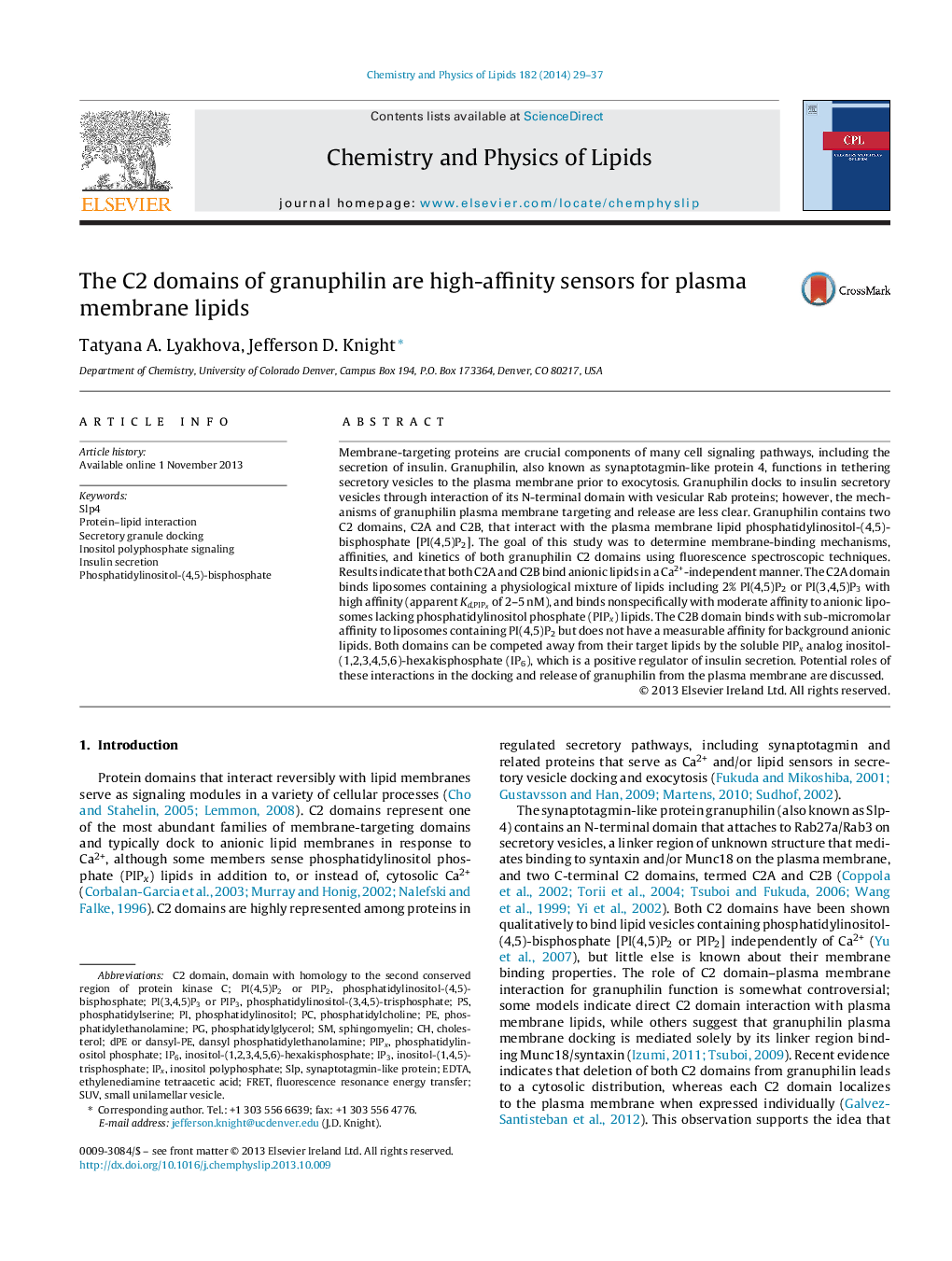| Article ID | Journal | Published Year | Pages | File Type |
|---|---|---|---|---|
| 1251798 | Chemistry and Physics of Lipids | 2014 | 9 Pages |
•Both granuphilin C2 domains bind lipids present in the plasma membrane: PS and PIP2.•C2A binds liposomes containing PS and PIP2 with high affinity (2–5 nM).•C2B binds liposomes containing PS and PIP2 with moderate affinity (∼200 nM).•The signaling molecule IP6 competes with anionic lipids for binding both domains.
Membrane-targeting proteins are crucial components of many cell signaling pathways, including the secretion of insulin. Granuphilin, also known as synaptotagmin-like protein 4, functions in tethering secretory vesicles to the plasma membrane prior to exocytosis. Granuphilin docks to insulin secretory vesicles through interaction of its N-terminal domain with vesicular Rab proteins; however, the mechanisms of granuphilin plasma membrane targeting and release are less clear. Granuphilin contains two C2 domains, C2A and C2B, that interact with the plasma membrane lipid phosphatidylinositol-(4,5)-bisphosphate [PI(4,5)P2]. The goal of this study was to determine membrane-binding mechanisms, affinities, and kinetics of both granuphilin C2 domains using fluorescence spectroscopic techniques. Results indicate that both C2A and C2B bind anionic lipids in a Ca2+-independent manner. The C2A domain binds liposomes containing a physiological mixture of lipids including 2% PI(4,5)P2 or PI(3,4,5)P3 with high affinity (apparent Kd,PIPxKd,PIPx of 2–5 nM), and binds nonspecifically with moderate affinity to anionic liposomes lacking phosphatidylinositol phosphate (PIPx) lipids. The C2B domain binds with sub-micromolar affinity to liposomes containing PI(4,5)P2 but does not have a measurable affinity for background anionic lipids. Both domains can be competed away from their target lipids by the soluble PIPx analog inositol-(1,2,3,4,5,6)-hexakisphosphate (IP6), which is a positive regulator of insulin secretion. Potential roles of these interactions in the docking and release of granuphilin from the plasma membrane are discussed.
